
Hope for a huge, ancient and imperilled fish
First Nations are leading efforts to make sure lake sturgeon can find a home in...
Laura Laing can’t imagine how her family would run their cow-calf operation without their Mount Livingstone grazing allotment.
These native grasslands, nestled among the hills and peaks, with Cabin Ridge Mountain rising above the pastures, support a large percentage of the Plateau Cattle Company herd from early June to the beginning of October.
“Year after year, it’s been our best-producing pasture,” said Laing, who values the benefits of the native grass, clean water and open spaces in this area for her family’s herd.
This third-generation ranch west of Nanton, Alta., like many others in southwestern Alberta, relies on being able to graze its cattle in the Mount Livingstone Range. This breathtaking landscape has been vital to numerous beef operations for decades, and it’s unfathomable to Laing that this place could soon be changed beyond recognition.
But this could be a devastating reality for many ranchers on the Eastern Slopes of the Rocky Mountains if a proposed open-pit coal mine is given the green light this fall. This is becoming more likely due to a recent change in a 44-year-old policy on coal mining in Alberta.
“You really have to fight to stay in this industry,” Laing said. “We try not to get overly emotional about it because that makes you quite reactive…We say to ourselves, ‘how could this even be a thing?’ It’s disastrous to the landscape.”
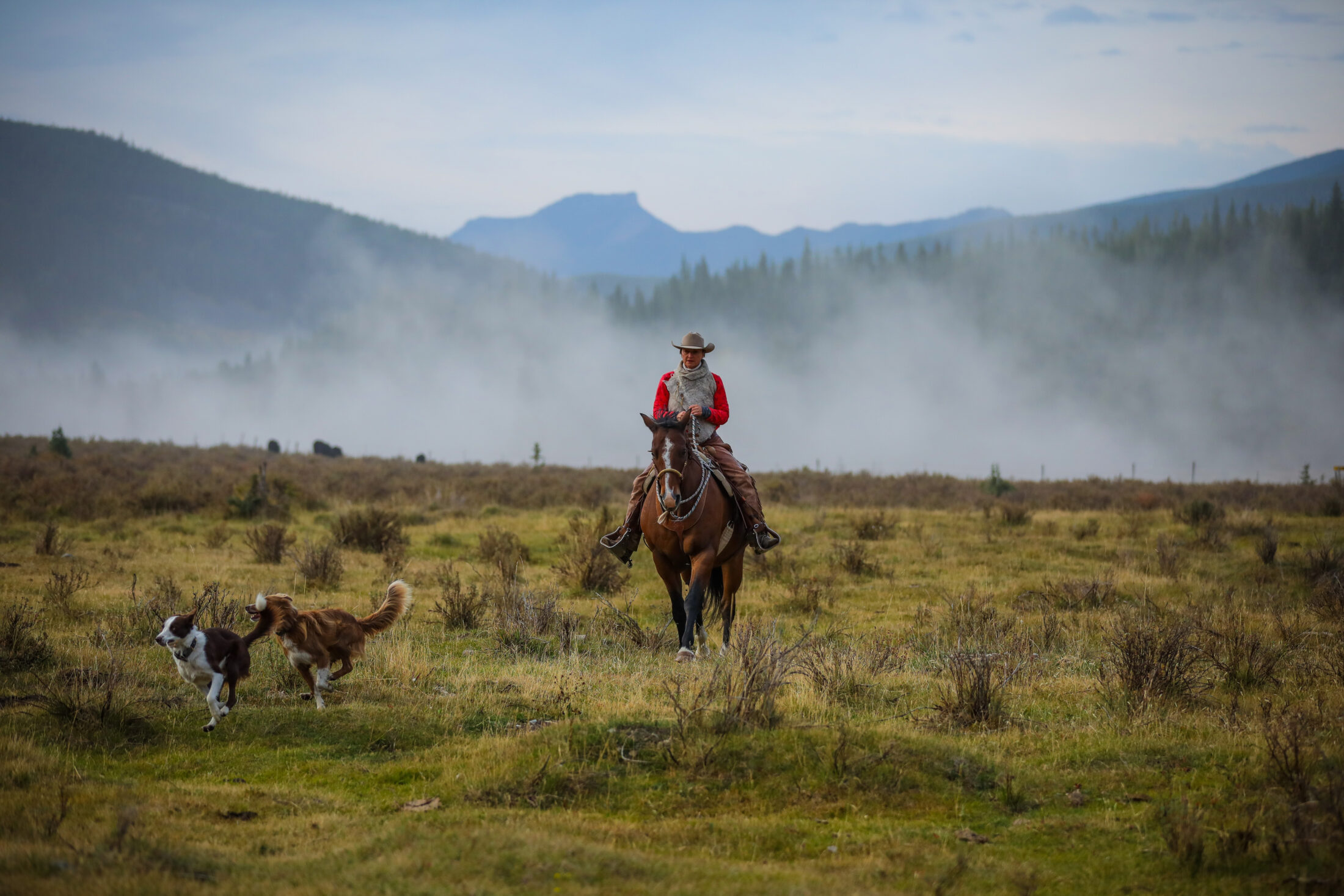
Laura Laing says she can’t imagine how her family would run their cow-calf operation without their Mount Livingstone grazing allotment, now threatened by a coal mine proposal. Photo: Leah Hennel / The Narwhal
On June 1, the province of Alberta quietly revoked the Coal Policy, which had previously restricted coal mining exploration and development in areas considered environmentally sensitive. Enacted in 1976, this legislation had regulated coal mining over four categories of land. While former Category 1 lands in the Rockies are to remain protected, the provincial government stated, Category 2 lands are now open for coal development. The change came without a public consultation period.
The lifting of restrictions on Category 2 lands, covering 1.4 million hectares of land in the foothills and Rockies deemed moderately to highly environmentally sensitive, including the Mount Livingstone Range, is especially troubling to those who rely on these lands to pasture cattle. Until now, open-pit mines had been prohibited on Category 2 lands, and underground mines were only allowed if surface impacts were considered acceptable for the environment.
“They opened up a huge swath of land that historically Albertans have said needs to remain in its natural state and be available to multiple users, to now be available for what we call mountaintop removal mining,” said Bobbi Lambright, secretary of the Livingstone Landowners Group.
This type of mining, often used for surface mines in the Appalachian Mountains of the southeastern U.S., requires the removal of all vegetation and top soil, then explosives are used to blast all the rock above the coal seam to expose it. Waste rock is moved into massive piles, and the blasting is known to release toxic elements from the rock into the environment.
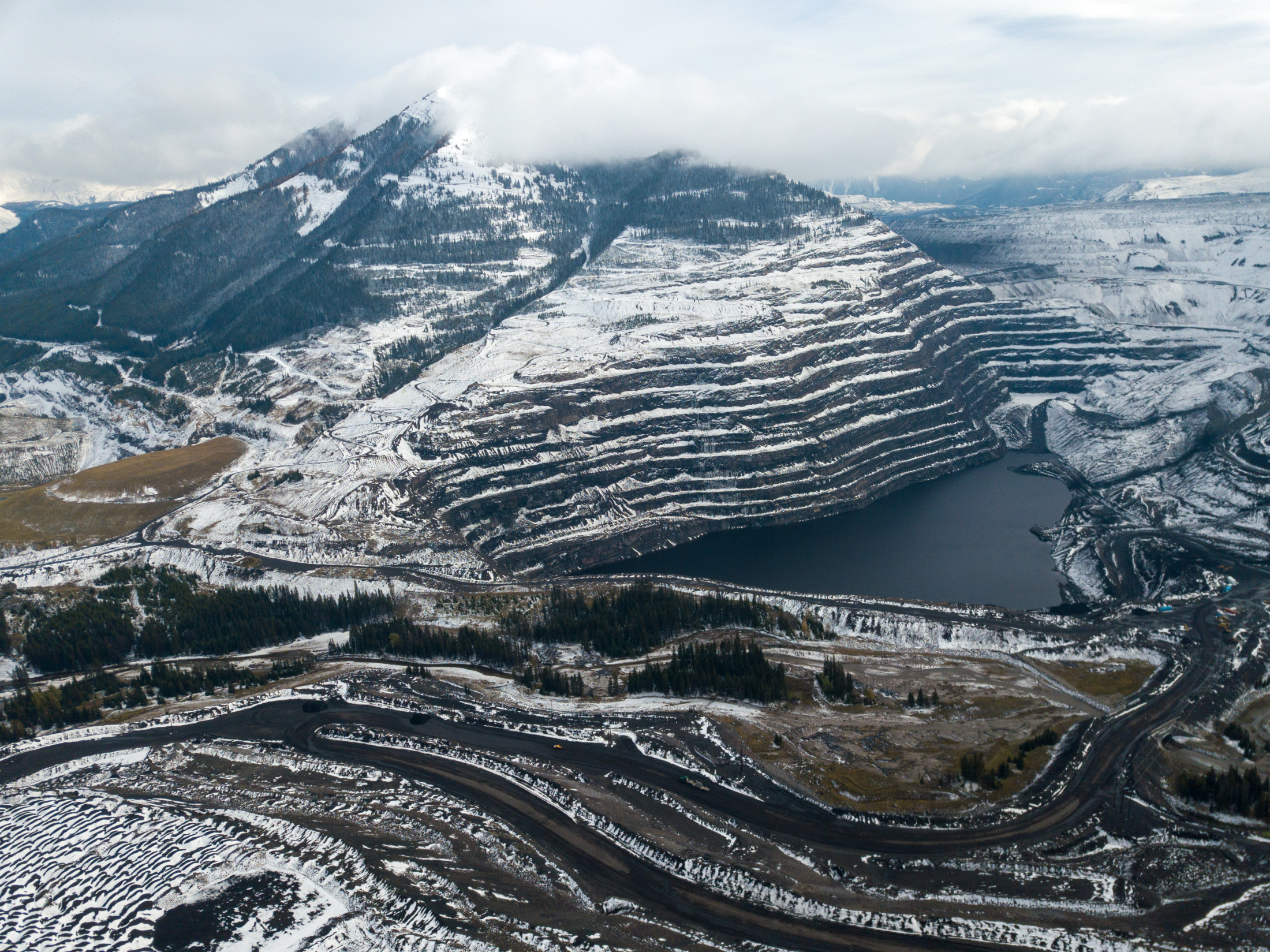
A mountaintop removal metallurgical coal mine, owned and operated by Teck Resources in B.C.’s Elk Valley. The Grassy Mountain Coal Project near Blairmore, Alta., would also be a mountaintop removal mine. Photo: Jayce Hawkins / The Narwhal
This comes as the Grassy Mountain Coal Project, just north of Blairmore, Alta. Australia’s Benga Mining Limited moves through the application process for its plans to develop an open-pit metallurgical coal mine with a production capacity of up to 4.5 million tonnes of coal per year, with a lifespan of 25 years. The Grassy Mountain project is located on the site of a former coal mine on Category 4 lands so was not protected under the Coal Policy, even before it was rescinded. Benga has sought provincial and federal approval for this mine since 2014, and a public hearing is scheduled to start in October.
Mines like these raise numerous concerns for Laing, with the impact on water quality at the top of her list, as well as loss of native grasslands and the spread of coal dust toxins in an area of extreme winds.
“We’re not anti-development at all, but you’re not going to put a mountain back, you’re not going to put the native grasses back and you’re definitely not going to revert it back to pasture land after. That’s just not going to happen,” she said. “For the general public, if they look west when they’re driving the Cowboy Trail, that landscape’s going to change.”
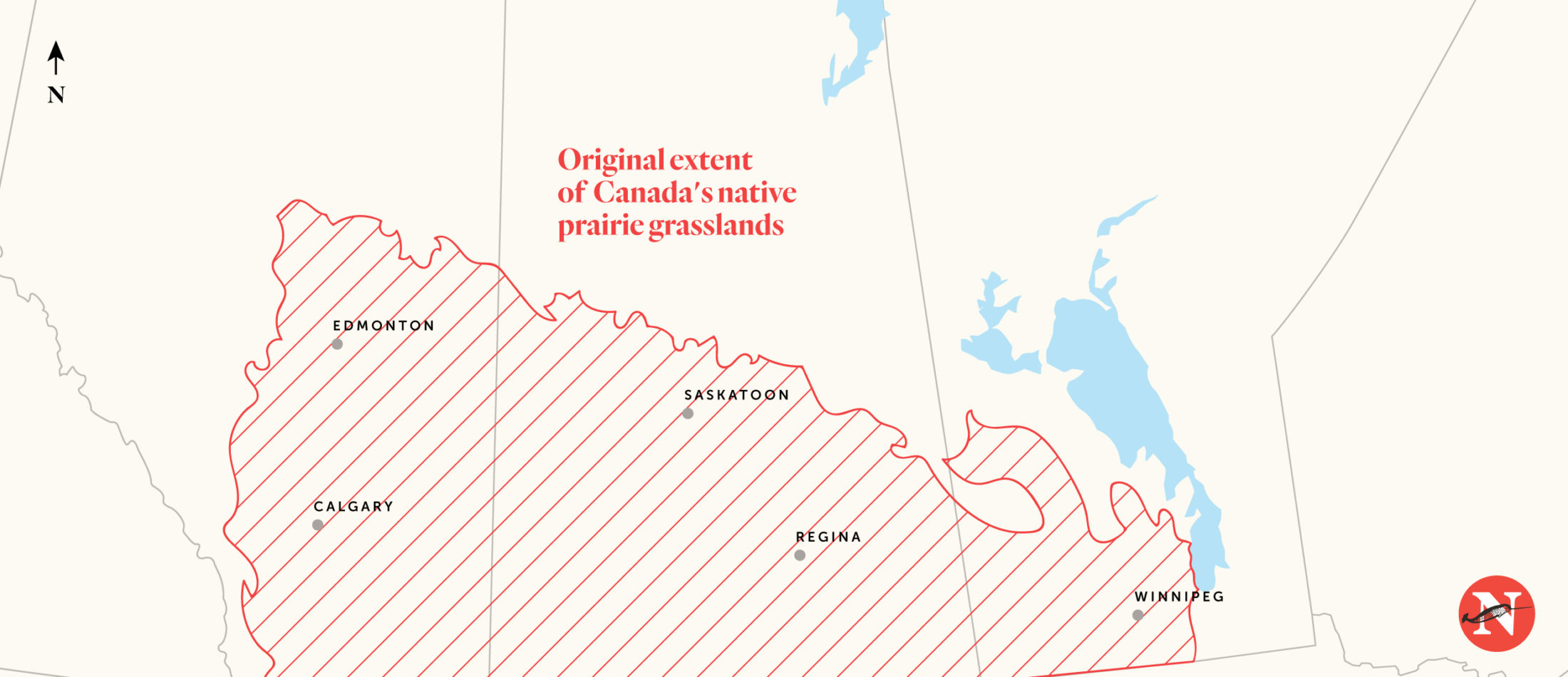
The original extent of Canada’s native prairie grasslands. Between 75 and 90 per cent of the grasslands have been eradicated. Map: Alicia Carvalho / The Narwhal
The lack of public knowledge about both the rescission of the Coal Policy and the Grassy Mountain project alarms Laing, who said she only learned about these when notified by the mining company, not the provincial government. “Everybody we speak to in the area or in the community or public users up in our grazing allotments have no idea that this passed,” she said. “The public awareness has been very low, and I don’t think that that’s a coincidence.”
This comes in the midst of a difficult economic situation, when the impacts of COVID-19 are the latest challenges facing beef producers already concerned about the financial viability of their operations. “As producers we continue to feel pressures from all areas,” said Laing, who foresees many negative affects on her grazing allotment due to coal development, such as “stress on the animals from equipment, drilling, personnel, wildlife relocation (and) predation.”
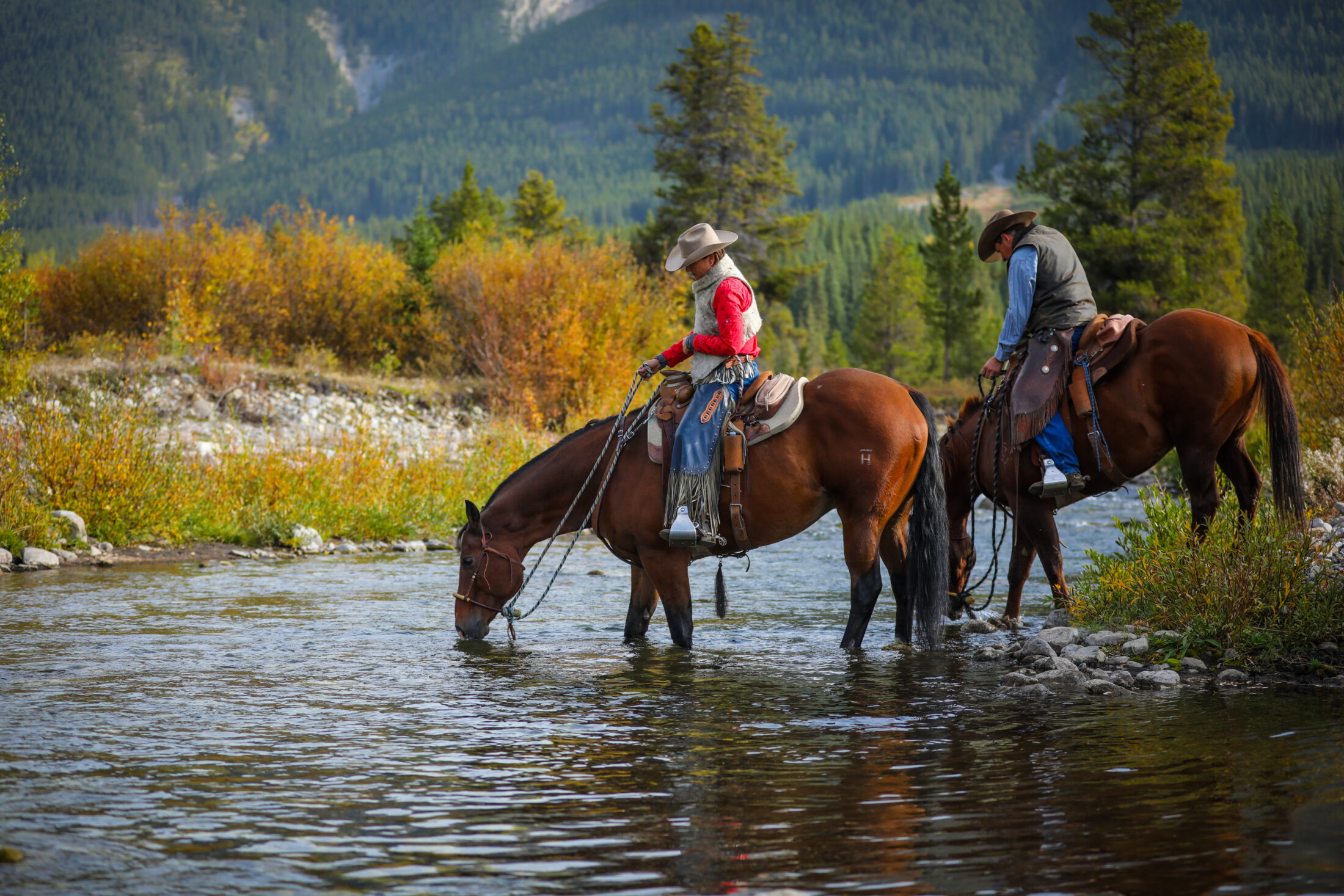
John Smith and Laura Laing cross the Livingstone River. Ranchers are concerned about the potential impact of a new coal mine on water quality. Open-pit coal mining can increase levels of selenium in rivers, which can be toxic to fish populations and contaminate drinking water. Photo: Leah Hennel / The Narwhal
The Livingstone Landowners Group is among those raising concerns about the provincial government’s sudden shift in coal development policy. This organization represents ranchers, residents and businesses in the Livingstone Range and Porcupine Hills who want to see sustainable development and good land stewardship.
Development in formerly protected Category 2 lands, Lambright stated, could have many negative affects on its ecosystems. “It’s been designated through multiple land use plans as an area that’s got a lot of native prairie, it’s got a lot of unique habitats that support endangered and at-risk species.”
This would affect all users of the land, she continued, who currently work in what can be seen as a symbiotic relationship. “If you’ve got a cattle rancher using the land, his cattle are in there, they’re grazing the native grass, they’re mitigating potential future fire hazards, they’re providing food for people through their cattle and the grassland also supports things like reducing our carbon footprint.”
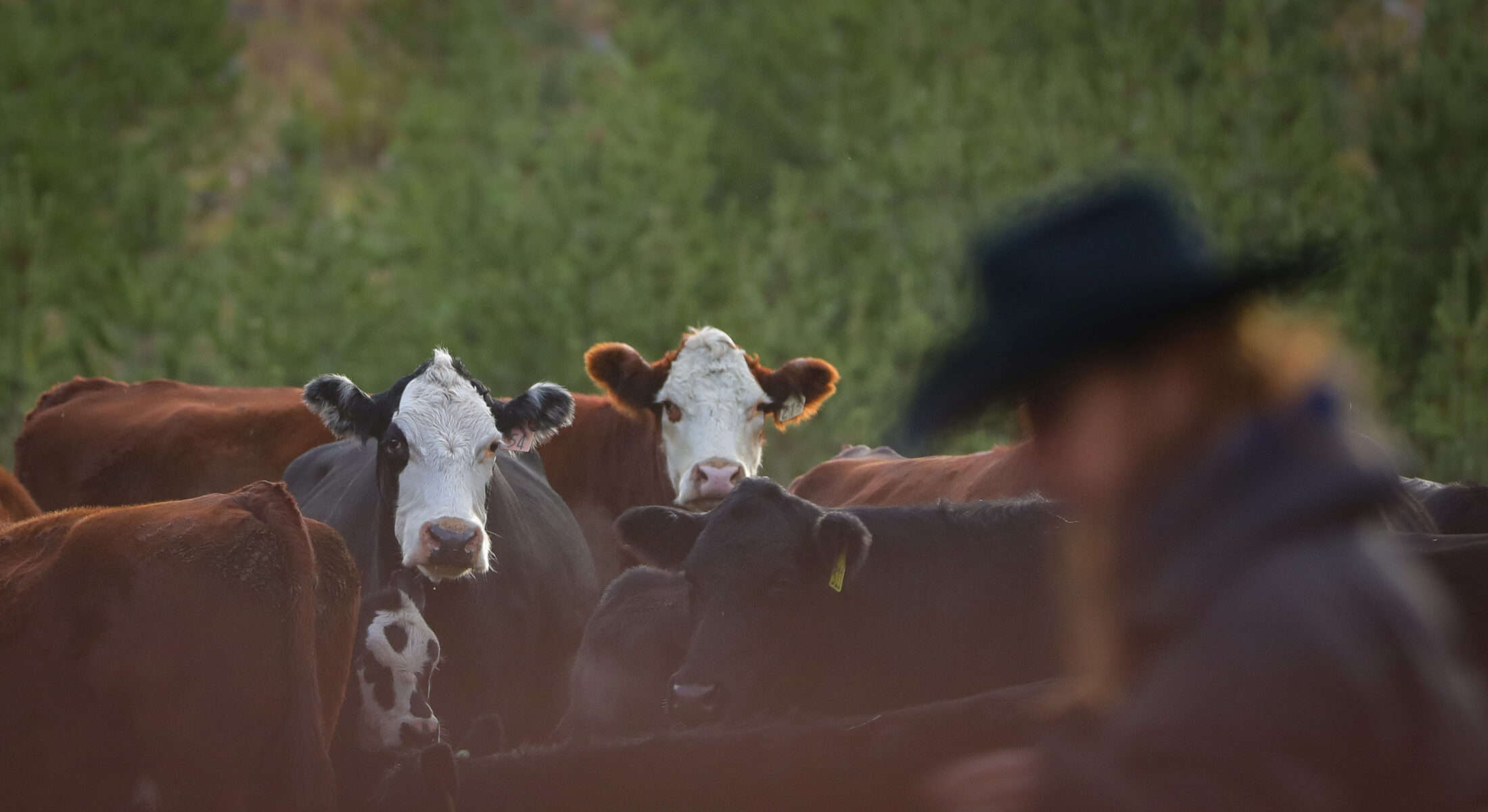
Grazing animals like cattle are an essential component of a healthy grasslands ecosystem. Less than 25 per cent of Canada’s grasslands remain intact. Photo: Leah Hennel / The Narwhal
In addition to those benefits, other public users make their living on this area through guiding, outfitting and tourism, as well as those who enjoy the land for fishing, hiking and hunting. “There’s a lot of uses of that land today that essentially would be eliminated or irrevocably changed if this coal mining were to go ahead.”
The potential impact on water quality is an area of great concern for both human health and the ecosystem, Lambright said. The element selenium can be released into water and soil as a result of open pit coal mining, and currently there is no known solution to wholly mitigate its impact once in a body of water.
This proved disastrous in B.C.’s Elk River Valley, after five coal strip mines operated by Teck Resources discharged selenium and other toxic chemicals into the river. In 2018, the company was fined $1.4 million for this selenium release, which was found to have caused a collapse of the local cutthroat trout population and the contamination of several private and community wells.
Availability of water is another issue. The Grassy Mountain project is near the headwaters of the Oldman River, a vital watershed for southern Alberta. More than 45 per cent of the province relies on this watershed, which is already facing considerable supply pressure due to natural flow reductions.
“There’s been no new licences that are supposed to be issued for water out of that watershed, and the water is fundamental to people’s livelihoods in all of these other areas,” Lambright said. “This level of intense mining would require a lot of water, and it’s a bit unclear at the moment how that need would be met.”
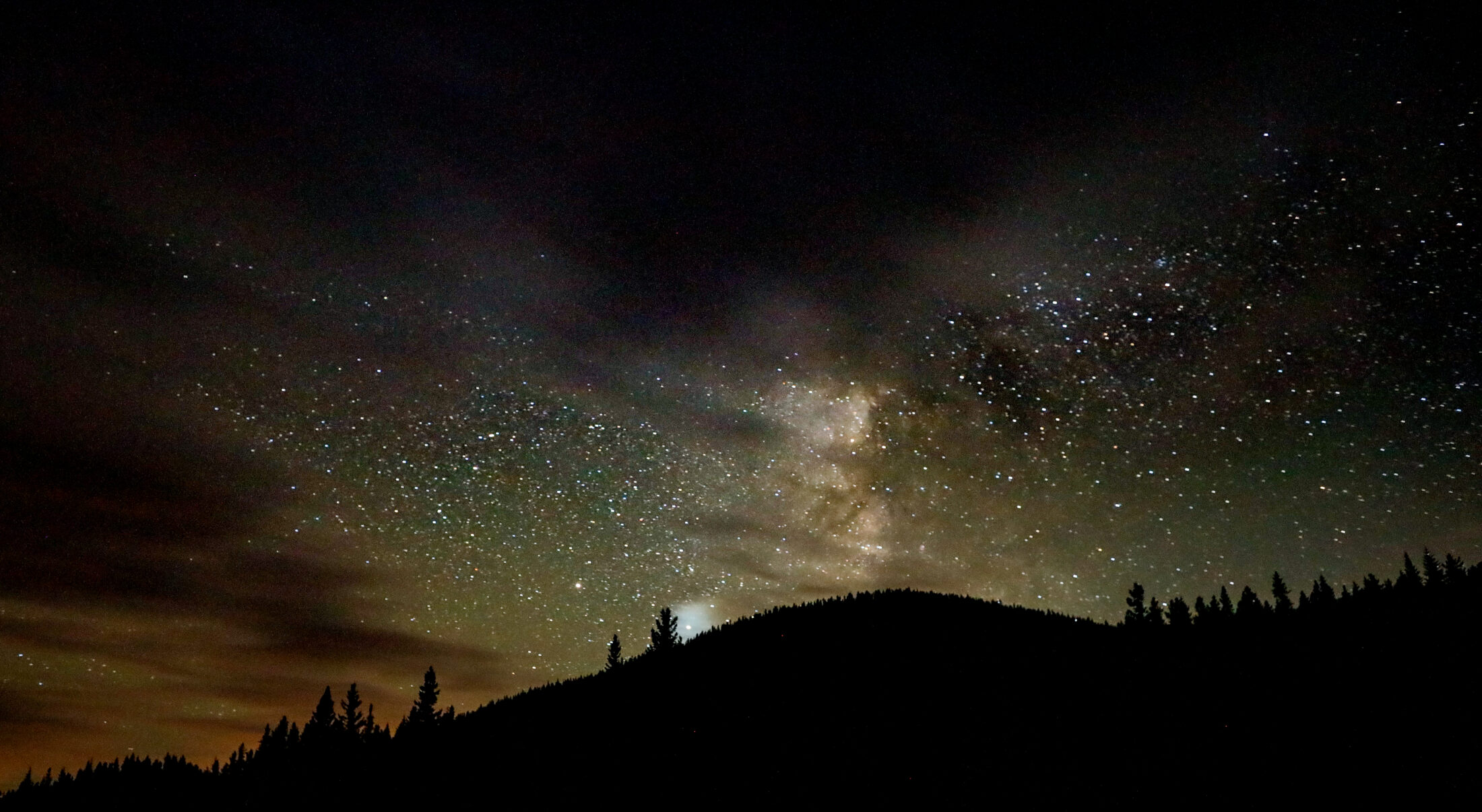
The Milky Way above the Livingstone Ridge. Photo: Leah Hennel / The Narwhal
When the provincial government announced the Coal Policy’s rescission this spring, officials said this decision would create new opportunities for investment as well as certainty for the coal industry.
“Rescinding the outdated Coal Policy in favour of modern oversight will help attract new investment for an important industry and protect jobs for Albertans,” said Sonya Savage, provincial energy minister, in a press release.
Even before the rescission of the coal policy opened up the possibility of new mines in the eastern slopes, the economic benefits of coal were being lauded. Benga Mining officials stated the Grassy Mountain mine would create approximately 400 full-time jobs when at peak production. With the current economic challenges increasing Alberta’s ongoing unemployment, some locals see this project as a positive move. Blair Painter, mayor of Crowsnest Pass — a town founded on mining — has expressed his support for new coal projects in the area. “This community is in desperate need of industry,” Painter stated in a letter in 2019.
Although the Alberta Energy Regulator will now approve coal projects individually, it’s worth noting that the Grassy Mountain project, as well as mines proposed in former Category 2 lands, will not mine the lower-quality thermal coal mined in other parts of the province for power generation. This is higher-quality metallurgical coal, which is used to make steel and in demand from international markets. Several other Australian companies have shown interest in mining metallurgical coal in Alberta.
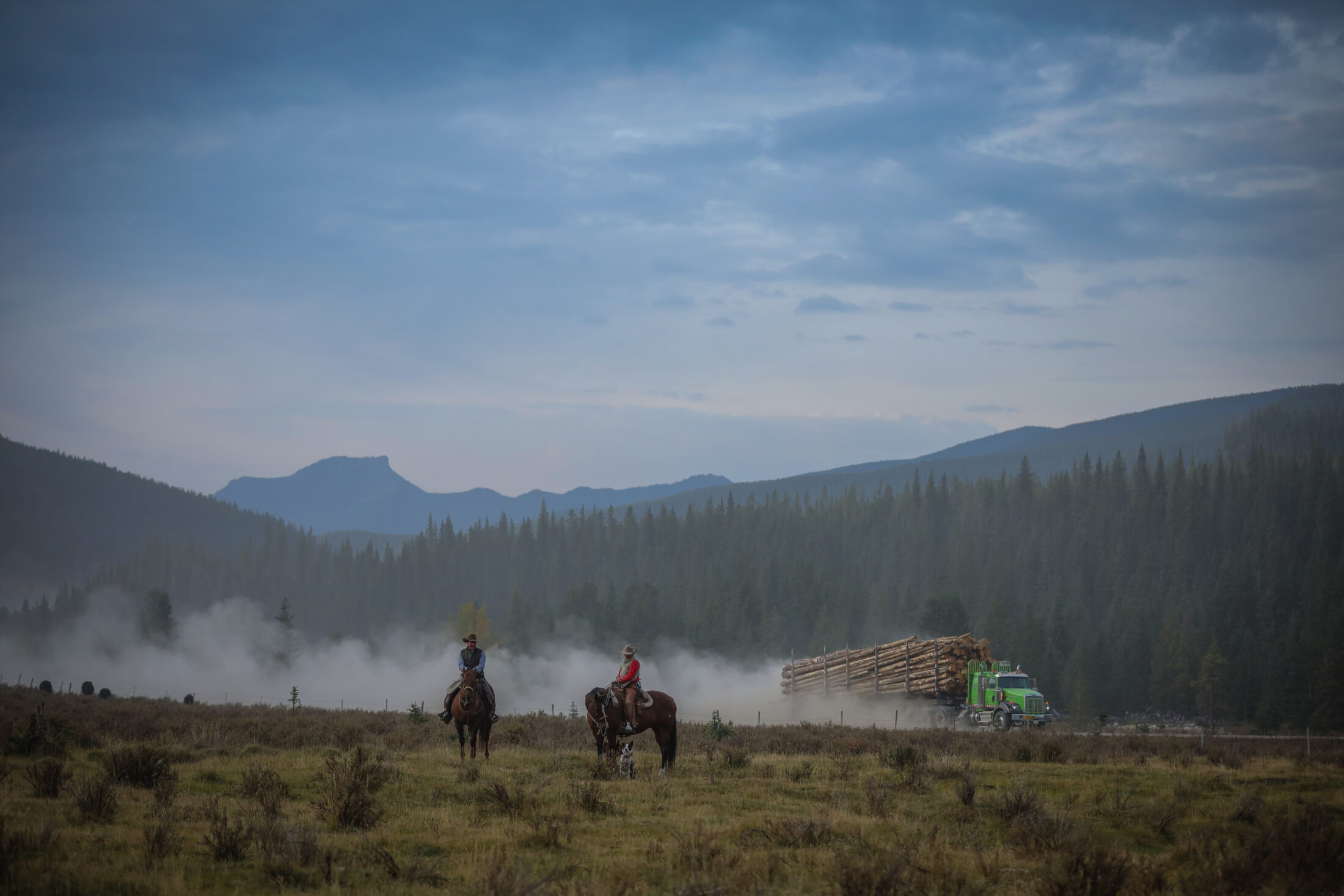
John Smith and Laura Laing during the Plateau Cattle Company’s fall round-up on their Mount Livingstone grazing allotment, with Cabin Ridge Mountain in the distance. Laing says the Alberta government’s decision to open up coal mining on economic grounds is short-sighted. Photo: Leah Hennel / The Narwhal
Laing sees the government’s economic argument as short sighted, given that it isn’t Alberta’s energy industry that will ultimately benefit. “Some of [the Australian companies] privately own some of the mineral rights up there, so there’s zero royalties back to Alberta, and for the ones that are getting royalties, it’s pennies on the dollar.”
Lambright agrees, adding that jobs may not be as secure as hoped in the long run, due to the fickle nature of the coal market and the industry’s push towards cutting costs through automation. In the case of Grassy Mountain, Benga Mining’s owner, Australia’s Hancock Prospecting, is “a world leader in automating mining,” she said. For example, the company owns an iron ore mine in northern Australia that is in the process of automating all its trucks, and the mine is monitored from a control centre in Perth, on the other side of the country.
Laing and other beef producers in southwestern Alberta are working to understand the scope of this policy shift and make the wider community aware of its potential impact on the Eastern Slopes. To help create awareness, local ranchers are collaborating with a film company to create a short film for social media that highlights the area and its history. Laing hopes the film will help to drive home the importance of this place to so many Albertans.
“Our mountains are who we are,” she said. “It’s really about coming together as a community to say, ‘our grass is disappearing, and this is our environment and our watershed. This is really a very big deal.’ ”
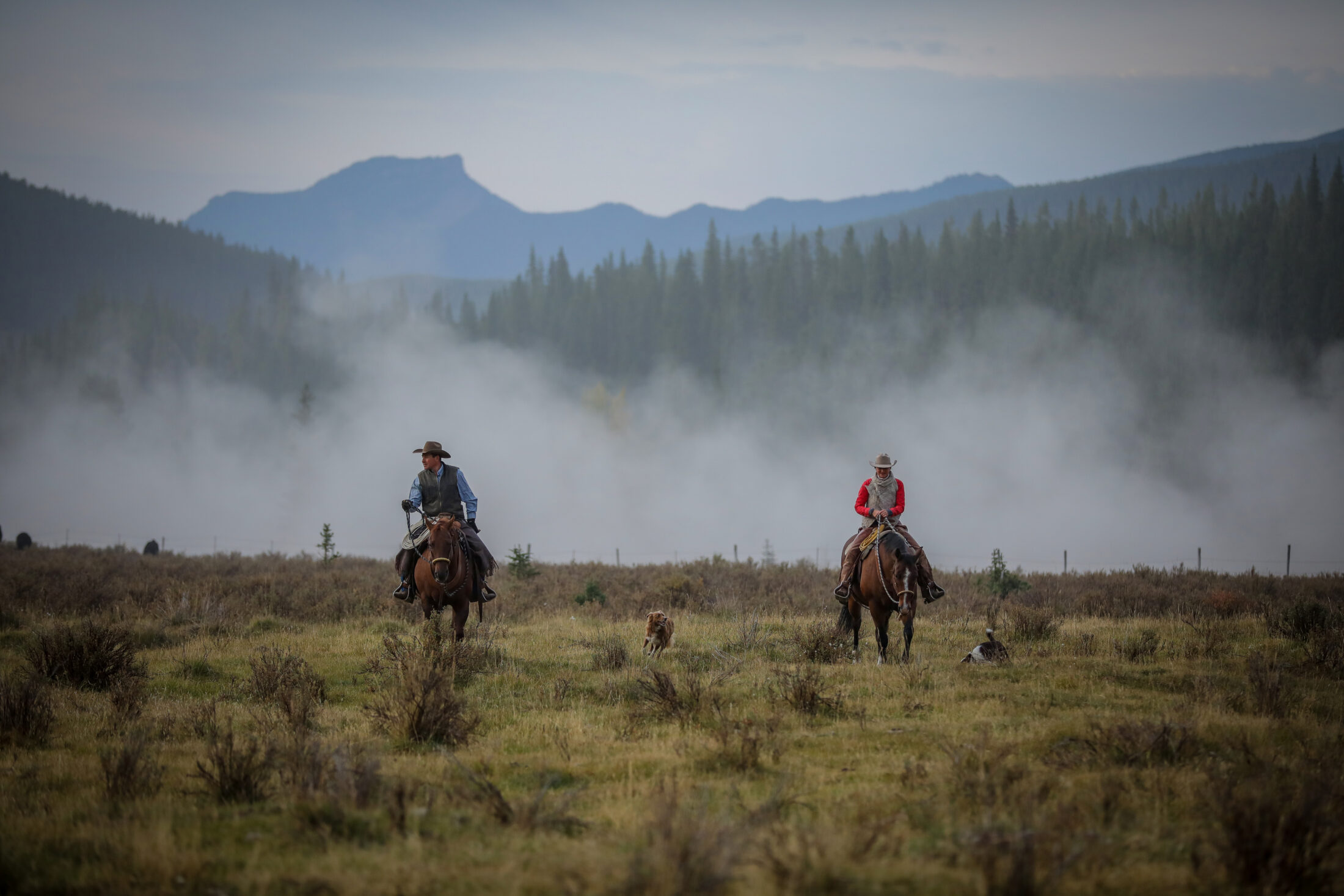
Laing says Alberta was built on agriculture. “Agriculture is the beacon in this economic recovery. Where’s the support for that?” she asked. Photo: Leah Hennel / The Narwhal
Laing would like the provincial government to consider the impact on agriculture in these development decisions, especially when it touts coal projects as necessary to Alberta’s post-pandemic recovery. “The province built its backbone on agriculture,” she said. “Agriculture is the beacon in this economic recovery. Where’s the support for that?”
It’s even more dire given that the loss of cattle producers in Western Canada often results in the loss of endangered native grassland, something that greatly concerns Laing from both a stewardship and business perspective.
“We don’t have somewhere else to go, and that will greatly reduce the sustainability of our operation. Where are we going to find grassland for over 155 pair that go up there for the summer months? So where’s the support to the cattle industry or the ranching operations when we’re selling out these native grasslands?”
Read more: Meet the people saving Canada’s native grasslands
Updated at 9:45 a.m. on Oct. 20, 2020 to remove a quote that implied Alberta’s coal would be shipped to Australia.
Updated at 10:00am on Feb. 9, 2021 to reflect the fact that the Grassy Mountain coal project is located almost entirely on category 4 lands and the application was underway before the Alberta government rescinded the 1976 coal policy.
Get the inside scoop on The Narwhal’s environment and climate reporting by signing up for our free newsletter. Angello Johnson’s shoulders burn, and his arms...
Continue reading
First Nations are leading efforts to make sure lake sturgeon can find a home in...

We’re excited to share that an investigation by The Narwhal is a finalist for the...

A new documentary, Nechako: It Will Be a Big River Again, dives into how two...
